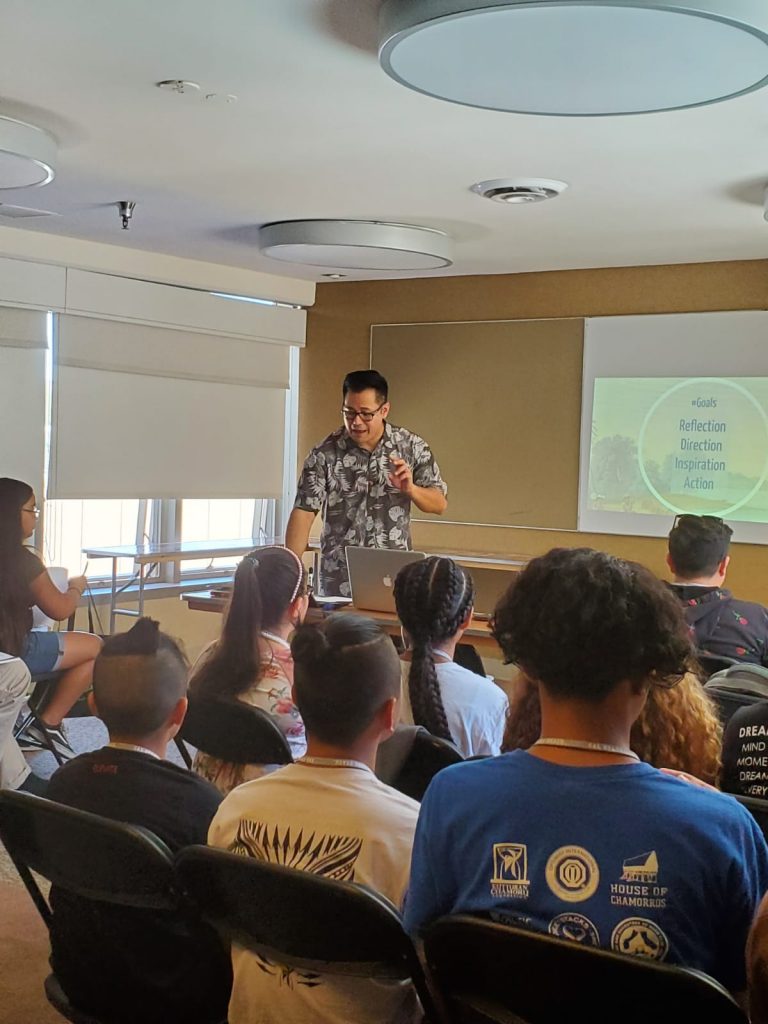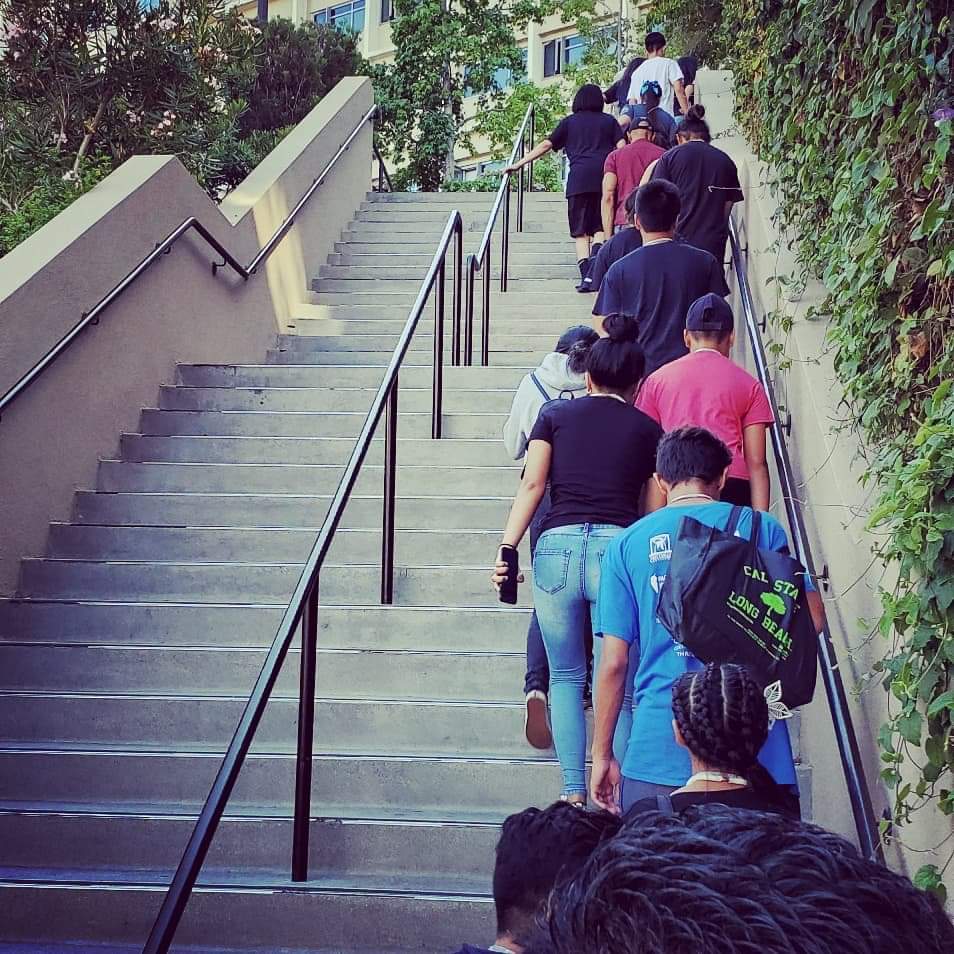Ta Fan Apåtte meaning “to share” is an annual Summer Immersion Camp lead by the Kutturan CHamoru Foundation. It welcomes manhoben (young adults) ages of 12 years of age and up to spend the weekend in the dorms at a local college or university.
The goal is for the participants to gain knowledge and insight on the CHamoru Culture, while developing an appreciation for traditions, language and preservation of their native heritage. Another goal is for the participants is to gain self-identity and leadership skills to better prepare them for high school, college, careers and community service.
Workshops are provided to gain this knowledge. Examples of these may include an introduction of their family background with the history of their ancestors, weaving, cultural dancing, and a presentation from a motivational speaker of Pacific Islander descent.
In its 5th year, Ta Fan Apåtte, the immersion camp was held at UCLA. Upon arrival the participants seemed so excited to begin their journey or maybe excited to be away from home. Whatever the case may be, this was a wonderful opportunity for them dive right into their culture.
A couple of workshops for this weekend included (but were not limited to): Awakening Our Ancestors Within, led by Felix Sablan. As well as a Weaving and CHamoru Dance workshop, led by Fa’fa’någue Rosemary Mantanoña.
During the Awakening Our Ancestors Within workshop, the participants chose a photo, and with that picture had to describe how they felt about being a CHamoru and their experiences on being CHamoru. I wish I could have been a fly on the wall during this discussion.
Many of the participants are dancers for stateside gumas, giving them a little advantage when CHamoru basic dance steps were taught. These steps are standards implemented and taught by Master of CHamoru Dance, Saina Frank Rabon. These basics connect each dance Guma’ (house) together. On the final day of the camp, the participants presented a choreographed dance taught by Fa’fa’någue Rosemary Mantanoña.
A crowd favorite of the camp was learning how to weave various objects such as a katupat, a flores rosa (flower), and a guihan (fish) with palm leaves. These woven objects may be used to adorn one’s costume for dancing. We also use them in our henton hulu (head band or crown) along with the CHamoru native flower, Puti Tai Nobiu.
Finally, the participants joined the audience at the PIEAM (Pacific Island Ethnic Art Museum) where they presented the crowd with what they learned over the weekend.
All in all, the camp was a great opportunity for these manhoben to gain knowledge of their heritage and culture so that they may apatte what they learned with others who may not know about our culture.
For more information about the Ta Fan Apåtte program, you may reach out to the Kutturan CHamoru Foundation
Si Diane

